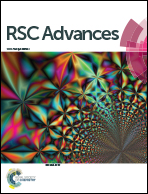PNIPAM hydrogel induces skeletal muscle inflammation response
Abstract
Although researchers believe hydrogels have favorable biocompatibility in vitro and in vivo, these kinds of synthetic polymers still have different immunogenic behavior in vivo, and bring forth a long-lasting inflammatory response. In this study, we attempt to explore the possibility of intramuscular implantation of a specific PNIPAM hydrogel to induce a chronic inflammatory-myoinjury model in mice. We injected a temperature-sensitive PNIPAM hydrogel mixed with or without fast-type skeletal muscle C protein, into the tibialis anterior muscle (TA) of WT B6 mice, and analyzed mononuclear cell infiltration, muscle autoantigens and TLRs expression, and the intramuscular CD8+ T cells infiltration and MHC-I expression on the surface of the new myofiber in TA muscle on day 15, 30 and 60 post-injection. We found that the PNIPAM hydrogel induces a skeletal muscle inflammation over 2 months. The inflammation response in the hydrogel injection area reached the peak on day 30, and then gradually decreased. Interestingly, the mixture of PNIPAM hydrogel/C protein initiated a more severe and persistent muscle inflammatory response, than hydrogel, or C protein injection alone. Immunofluorescence analysis demonstrated that the hydrogel induced chronic muscle inflammation featured by the CD8+ T cell infiltration and increased class I MHC-positive regenerating myofibers. Our work holds new promise for preparing an animal model of muscle inflammation using hydrogel as a bio-driver. The hydrogel induced-myoinjury model may be useful for investigating pathologic mechanisms of muscle injury, inflammation and regeneration.


 Please wait while we load your content...
Please wait while we load your content...